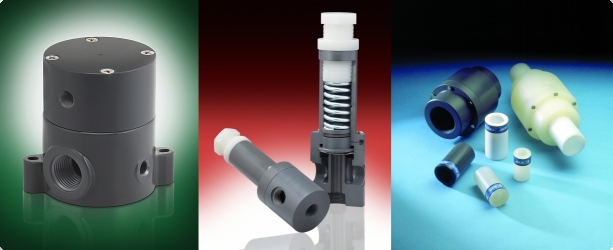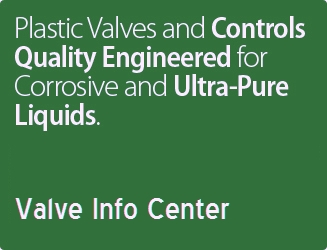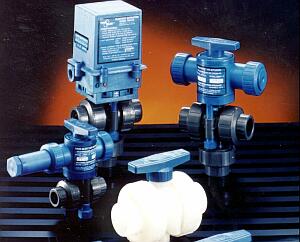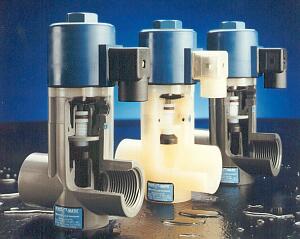 |
| Call Us: (973) 256-3000 |
Plast-O-Matic Valves, Inc.
1384 Pompton Avenue
Cedar Grove, NJ 07009 USA
Email: info@plastomatic.com |
|
|
|
  |
Actuated Ball Valves vs. Solenoid ValvesComparison of features and limitations, as well as recommendations when to use one or the other...Actuated Ball Valves | Solenoid Valves |  |  | - Very high flow rates w/low pressure drop
- Can be manual or actuated
- High inlet pressures permitted
- High back pressures permitted
- Air actuated valve has fail-safe option; explosion-proof
- Visual position indication
- Manual Override
- NEMA 4 type, CSA approved actuators available
- Slower acting than solenoid valve
- Electric actuator has no fail-safe position
- Bulky size vs. solenoid valve
- Electric actuator requires minimum off time to prevent overheating
- Water hammer potential due to high flow capacity must be taken into consideration.
| - Compact size & light weight
- Fail-safe design; normally-closed or normally-open
- Extremely high cycle life
- Very fast acting
- Many power choices in AC or DC
- High cycle capability
- NEMA 4X, CSA approved coils available as well as NEMA 7 & 9
- Back pressure and inlet pressure limitations based on size and design
- Pilot-designs require pressure differential
- Lower flow
- No manual override
- Water hammer potential due to rapid closure must be taken into consideration.
| | Please note that the unique characteristics and positive features listed above refer only to Plast-O-Matic products. For the purposes of this comparison, certain solenoid valve specifications inherent to specialized or unusual models are not addressed. |
 |
|
|
|
|
|
|
| |